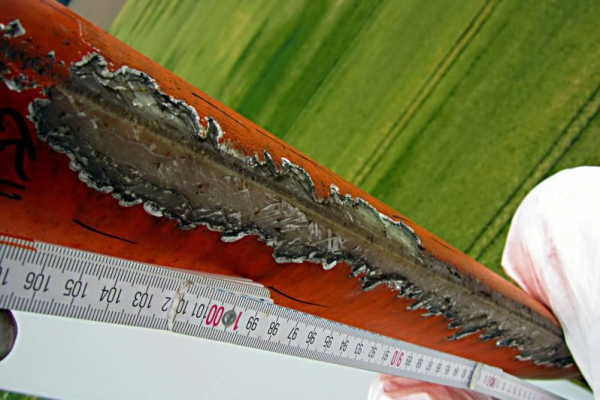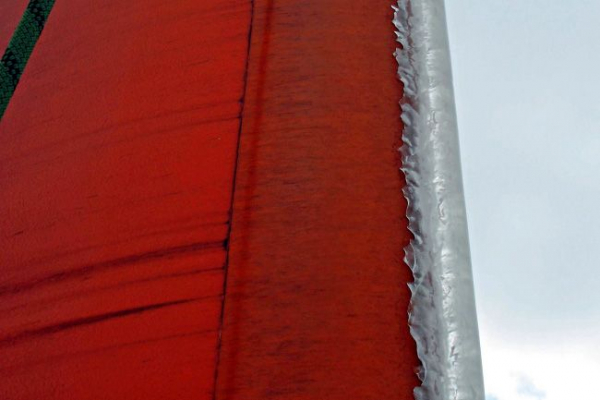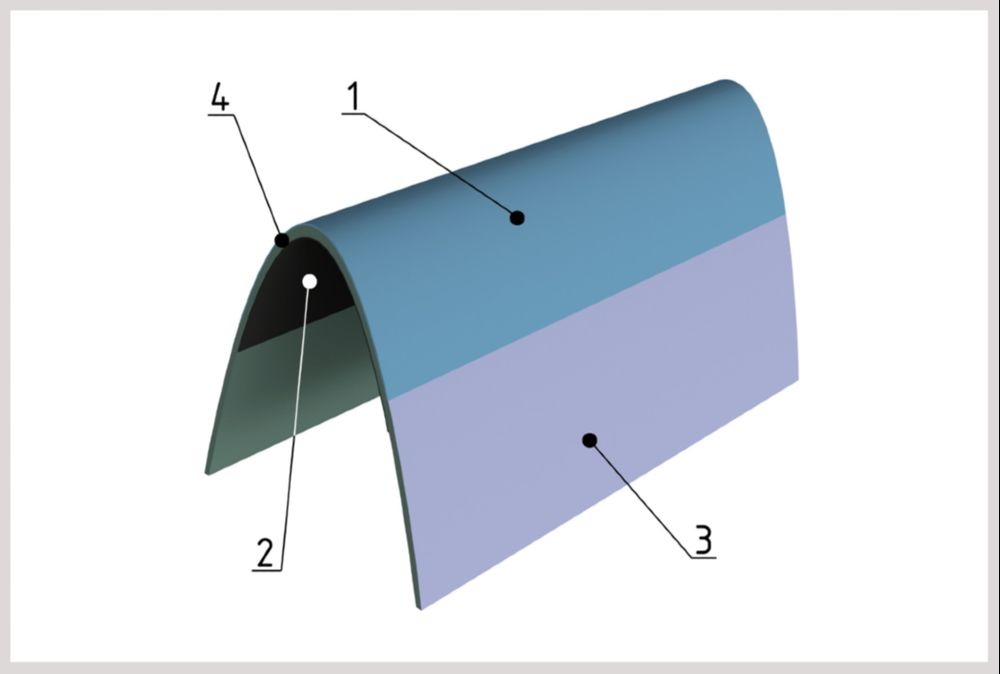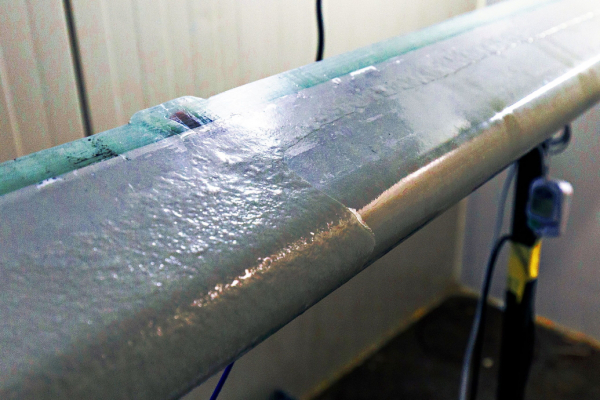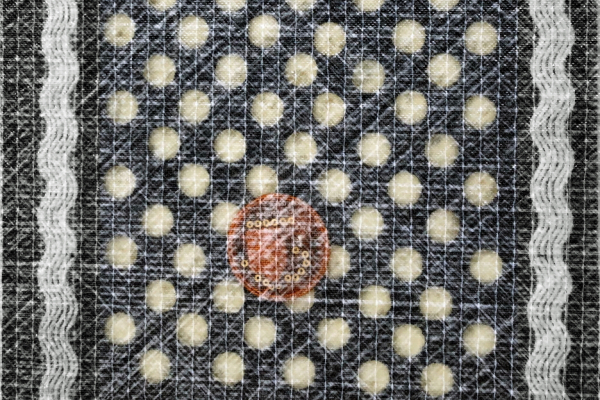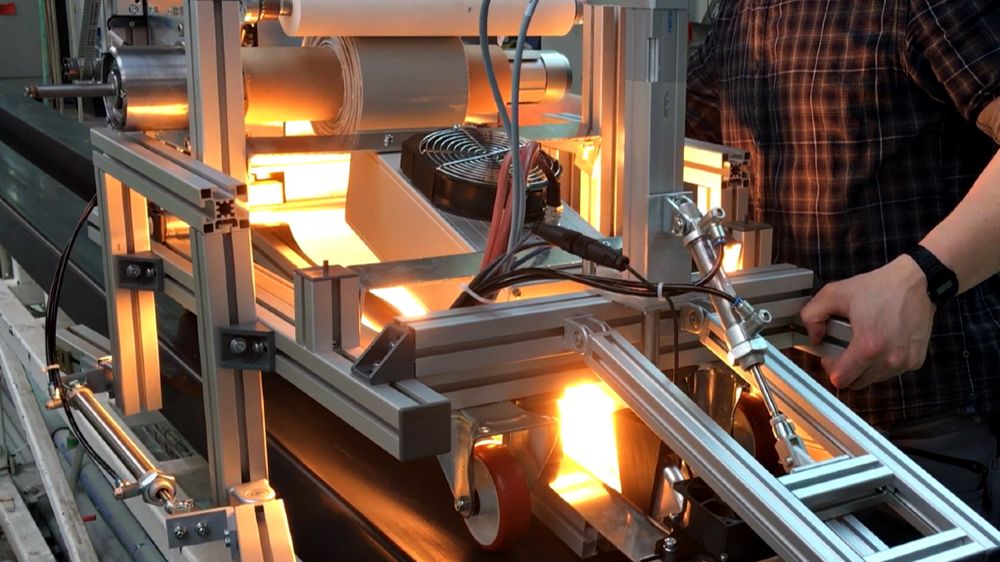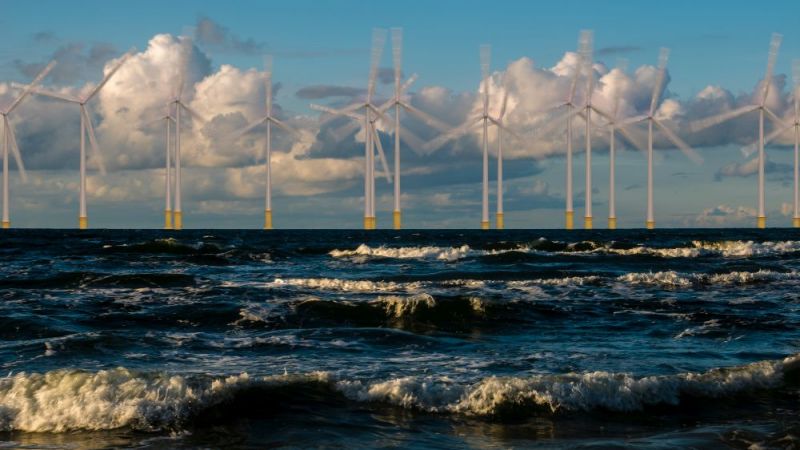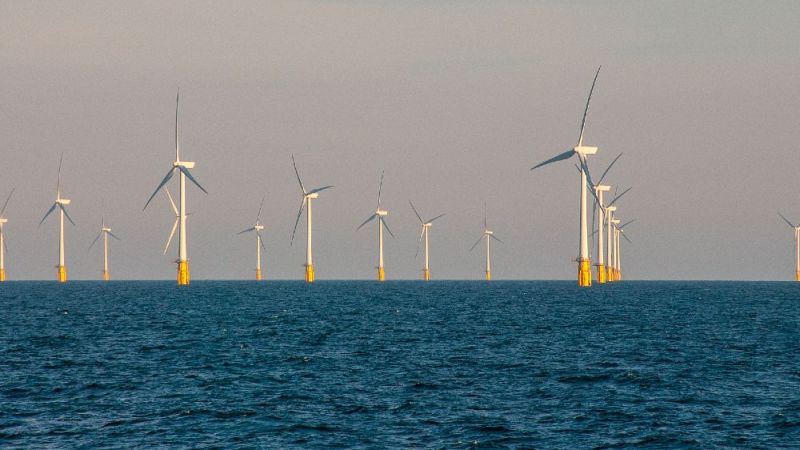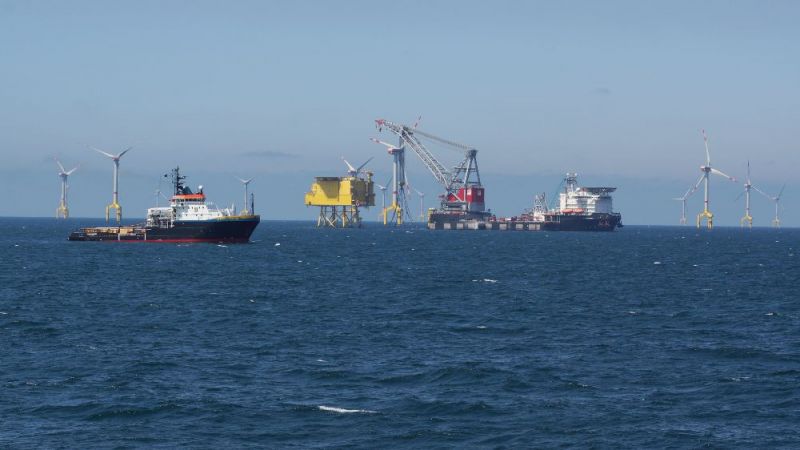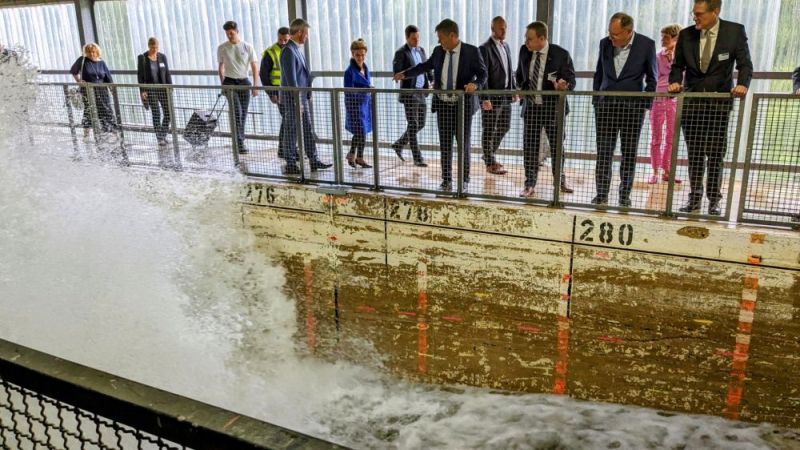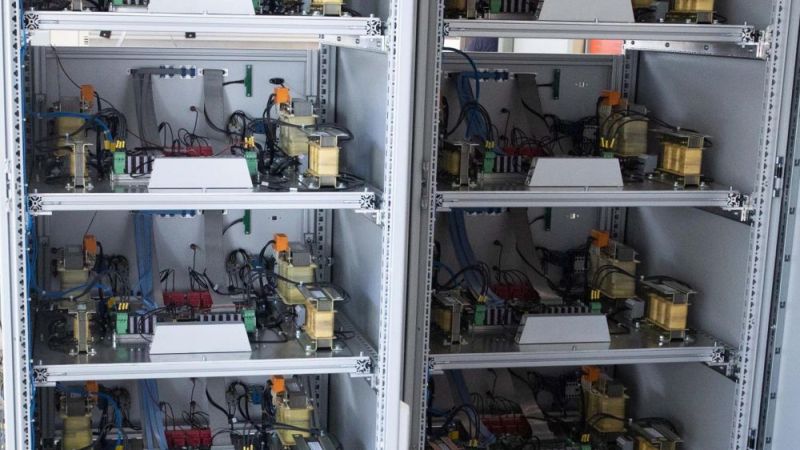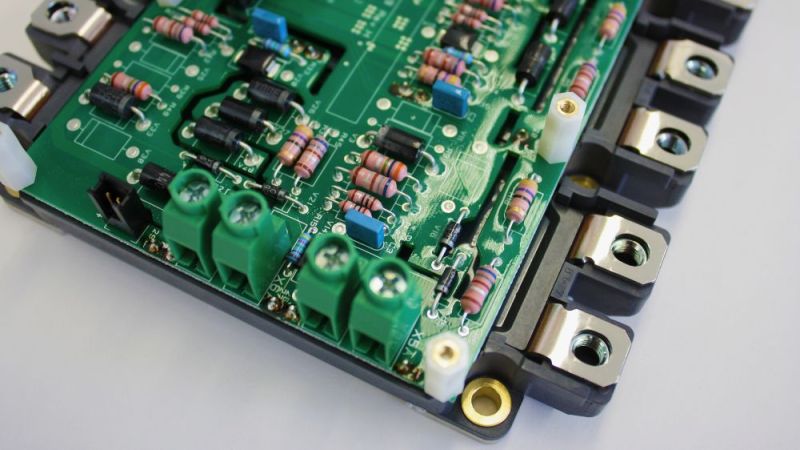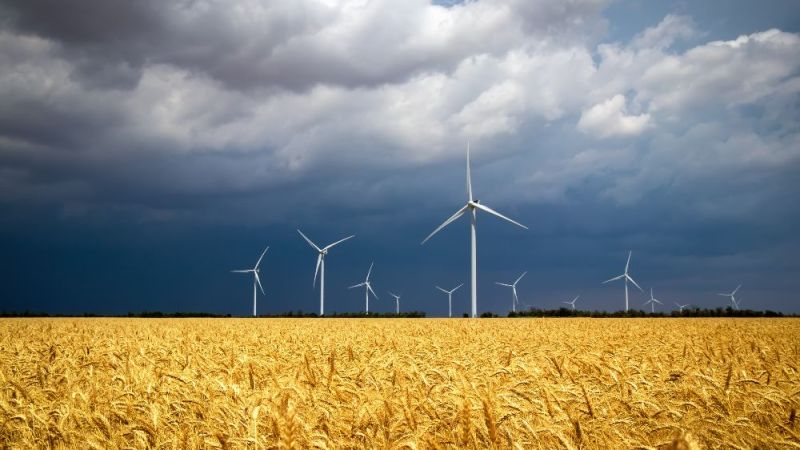Wind power
Protecting rotor blades from ice and rain
Wind turbines are exposed to high structural loads and extreme environmental influences. The leading edges of the rotor blades are struck by raindrops, hailstones and grains of sand. These leave behind considerable damage over time, despite the special paints and foils applied. To address this challenge, scientists have developed a new hybrid material that better protects the leading edge of the rotor blades from these environmental influences. An integrated heating system additionally prevents ice on the rotor blade.
Erosion reduces output
At the blade tips of a wind turbine, the rotational speed of a 60-metre-long blade is over 300 kilometres per hour. Raindrops that hit the leading edge of the rotor blade at this high speed burst and damage the blade surface. Furthermore, strong UV radiation damages the material of the blade surface. Once the loss of material has begun, erosion spreads within a short time. Additionally, ice can form on the leading edge in winter. Ultimately, erosion and ice deteriorate the aerodynamic properties of the rotor blade. Additional turbulence occurs, noise pollution increases and the output of the wind turbine decreases continuously. This means that rotor blades have to be repaired at lofty heights or, in the worst case, even replaced.
New leading edge for rotor blades protects against erosion
Special paints and foils are used to protect the leading edge from erosion damage. The lifetime of these protection systems is on average two to four years for offshore plants and four to six years for onshore plants. These values may vary depending on the respective locations, the environmental influences and the materials used.
Within the HyRoS research partnership, short for "Multifunctional Hybrid Solution for the Protection of Rotor Blades", researchers have developed a multifunctional leading edge. A thermoplastic foil serves as the basis. Thermoplastics are plastics, such as celluloid, which can be reversibly deformed within a certain temperature range. The thermoplastic is mechanically processed with a glass fibre fabric to form a hybrid material. This fabric is a non-woven textile structure whose fibres lie endlessly and parallel next to each other. It has high mechanical properties. The scientists have also developed a heating foil. This is then sewn together with another glass fibre fabric to form a hybrid material. In a next step, both hybrid materials are firmly bonded. This is done by vacuum infusion with epoxy resin. The glass fibre fabrics and the new hybrid materials ultimately result in the desired multifunctional fibre-reinforced composite component. This forms the actual protective layer of the leading edge of the rotor blade.
The project partners carried out initial tests of the new hybrid material in an Enercon rain erosion test stand. This allowed the scientists to successfully test the quality of the thermoplastic hybrid material. They are currently investigating the material to determine the actual usage period of the leading edge.
Heating foil prevents iced rotor blades
The new heating foil is designed to determine the temperature of the leading edge of the rotor blade. This requires a sensor in the blade edge which measures the current temperature. An RFID system with integrated temperature sensor is ideal for this method. RFID stands for radio frequency identification. RFID systems are capable of reading and storing data without contact. This method offers the advantage that the sensor can be integrated directly into the leading edge. The measurement values recorded are processed by a control unit which regulates the temperature of the leading edge via the heating foils.
Initial tests with the new rotor blade leading edge have shown that the heating foils work successfully under realistic conditions. To this end the project partners built a demonstrator, means a 3 to 4 metre long leading edge of a rotor blade and tested it in a climate chamber.
Automated production of protective blade edges
Rotor blades are usually manufactured manually. Employees insert different layers of material into component moulds by hand. This method is not possible with the new thermoplastic hybrid material because the material has high bending and shear stiffness. However, this property changes at higher material temperatures. The project partners have therefore developed an automatic application process that takes the special material properties into account. They have developed a so-called application trolley for this purpose. This applies one layer of the thermoplastic hybrid material per step. Additionally, they investigated a fully automatic application system that applies several layers of material to the mould simultaneously. The scientists were able to successfully test both methods within a real rotor blade production facility.
What happens next?
The new multifunctional hybrid material offers an innovative approach to the protection of rotor blades. The same applies to the new application method. Building on the positive results of the research partnership, the partner SAERTEX plans to develop the new leading edge protection system for rotor blades to market maturity.
In addition, the new hybrid materials and the new heating foil also offer interesting applications for rail transport or shipbuilding.
Last updated: 26.06.2020
Universität Bremen, Institut für integrierte Produktentwicklung (BIK)
Institut für Verbundwerkstoffe GmbH (IVW)
K.L. Kaschier- und Laminier GmbH
WRD Wobben Research and Development GmbH
HERMES Systeme GmbH


